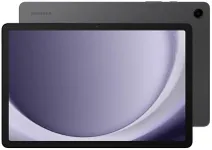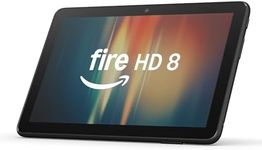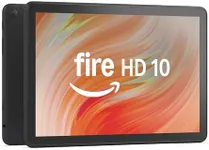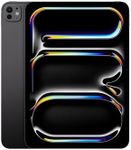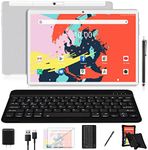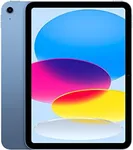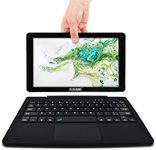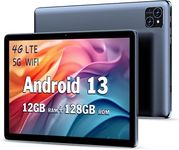Buying Guide for the Best Wi-Fi Tablets
When choosing a Wi-Fi tablet, it's important to consider how you plan to use it. Whether it's for browsing the internet, streaming videos, playing games, or working on the go, different tablets offer various features that can enhance your experience. Understanding the key specifications will help you make an informed decision and find the best fit for your needs.Screen SizeScreen size refers to the diagonal measurement of the tablet's display. This spec is important because it affects the portability and usability of the device. Smaller screens (7-8 inches) are more portable and easier to hold with one hand, making them ideal for reading or casual browsing. Medium screens (9-10 inches) offer a balance between portability and a comfortable viewing experience, suitable for watching videos and light productivity tasks. Larger screens (11 inches and above) provide a more immersive experience and are better for multitasking and professional use. Choose a screen size based on how you plan to use the tablet and how portable you need it to be.
ResolutionResolution indicates the number of pixels on the screen, which affects the clarity and sharpness of the display. Higher resolution means more pixels and a clearer image. Common resolutions include HD (1280x720), Full HD (1920x1080), and higher resolutions like 2K or 4K. For basic tasks like browsing and reading, HD resolution is sufficient. For watching videos and playing games, Full HD or higher is recommended for a better visual experience. If you plan to use the tablet for professional work or graphic design, a higher resolution will provide more detail and accuracy.
ProcessorThe processor, or CPU, is the brain of the tablet and determines how fast and efficiently it can run applications. A more powerful processor will handle multitasking and demanding apps better. Entry-level tablets often have basic processors suitable for simple tasks like browsing and streaming. Mid-range tablets have more capable processors that can handle gaming and productivity apps. High-end tablets feature powerful processors that can manage intensive tasks like video editing and 3D rendering. Choose a processor based on the complexity of the tasks you plan to perform on the tablet.
RAMRAM (Random Access Memory) is the memory used by the tablet to run applications and manage tasks. More RAM allows for smoother multitasking and better performance with demanding apps. Basic tablets may have 2-3GB of RAM, which is adequate for light use. Mid-range tablets typically offer 4-6GB of RAM, providing a good balance for most users. High-end tablets come with 8GB or more, ensuring smooth performance even with heavy multitasking and resource-intensive applications. Consider your usage patterns and choose a tablet with enough RAM to ensure a smooth experience.
StorageStorage refers to the amount of space available for your apps, files, and media. Tablets come with varying storage capacities, typically ranging from 16GB to 512GB or more. If you plan to store a lot of apps, photos, videos, and documents, opt for a tablet with higher storage. Some tablets also offer expandable storage via microSD cards, which can be a cost-effective way to increase capacity. For basic use, 32GB may be sufficient, but for more extensive media libraries and apps, consider 64GB or higher.
Battery LifeBattery life indicates how long the tablet can operate on a single charge. This is crucial for users who need to use the tablet on the go without frequent recharging. Battery life can vary widely, with some tablets offering 6-8 hours and others providing 10-12 hours or more. If you plan to use the tablet for extended periods away from a power source, look for a model with longer battery life. Consider your daily usage patterns and choose a tablet that can comfortably last through your typical day.
Operating SystemThe operating system (OS) is the software platform that runs on the tablet. The most common OS options are iOS (Apple), Android, and Windows. iOS is known for its smooth performance and extensive app ecosystem, making it a popular choice for users who value simplicity and reliability. Android offers more customization options and a wide range of devices at different price points. Windows tablets are ideal for users who need compatibility with desktop applications and prefer a more traditional computing experience. Choose an OS based on your preferences and the apps you plan to use.
Camera QualityCamera quality is important if you plan to use the tablet for photography, video calls, or content creation. Tablets typically have front and rear cameras with varying resolutions. Higher megapixel counts generally mean better image quality. Basic tablets may have 5-8MP cameras, suitable for casual photos and video calls. Mid-range tablets often feature 8-12MP cameras, providing better quality for photos and videos. High-end tablets can have 12MP or higher cameras with advanced features like optical image stabilization and 4K video recording. Consider how often you'll use the camera and choose a tablet with the appropriate camera quality for your needs.
Connectivity OptionsConnectivity options determine how you can connect your tablet to other devices and networks. Wi-Fi is standard, but some tablets also offer cellular connectivity (4G/5G) for internet access on the go. Bluetooth is useful for connecting peripherals like keyboards and headphones. USB ports (Type-C or micro-USB) allow for charging and data transfer. Some tablets also support HDMI output for connecting to external displays. Consider your connectivity needs and choose a tablet that offers the necessary options for your use case.
